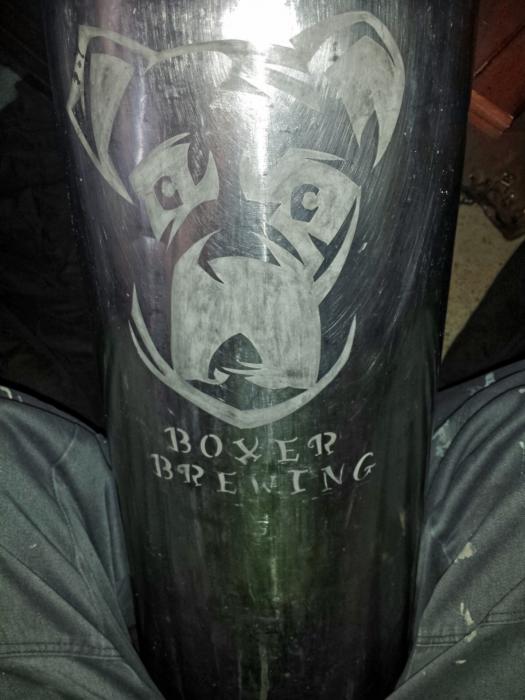kyt
Well-Known Member
You could go back and etch more but if your tape is off you'll be able to tell.

You could go back and etch more but if your tape is off you'll be able to tell.



What I'm wondering now is, would this etched surface provide a nucleation point for boiling?
Is John Palmer on this forum?
Are you re-passivating after the etch? You can make a paste of citric acid and cake on the side with HOT water in the vessel. Should be over 140F i think to passivate properly... something to read up on.
It will draw the Chromium Oxide back to the surface and make your Stainless Steel pot "Stainless" again.

A little Bar Keepers Friend will passivate the spots and you shouldn't have any issues going forward. Just remember stainless is mostly composed of Iron so don't be alarmed if you see any small spots show up. BKF works wonders on SS!
Finally getting around to this. One pot done, one more tomorrow night.
View attachment 191987
ps...this is supposed to be the nine gallon 2weld pot from AIH, measurements show the gallons to be 1.5" apart. Not sure if anyone has numbers to disprove this, but i guess to late now huh?
It could be the picture, but it appears that 6,7,8 are further apart than 1,2,3,4,5. As others have said, would definitely test with water first.ps...i did do water measurements from 1 to 5 gal. Then 6, 7, 8 are based of those physical distance measurements.
It could be the picture, but it appears that 6,7,8 are further apart than 1,2,3,4,5. As others have said, would definitely test with water first.


2-L markings that get wider as they go up. I numbered increments of 10.

Great diy. Did one of my corneys just to pratice
Assuming you used something bigger than a qtip. Did you have to change out the solution any or the etching tool? I found the qtip to get nasty and the wire to get really corroded just doing the gallon marks.


Can someone post photos of the inside of their keggle w/etching?
Enter your email address to join: